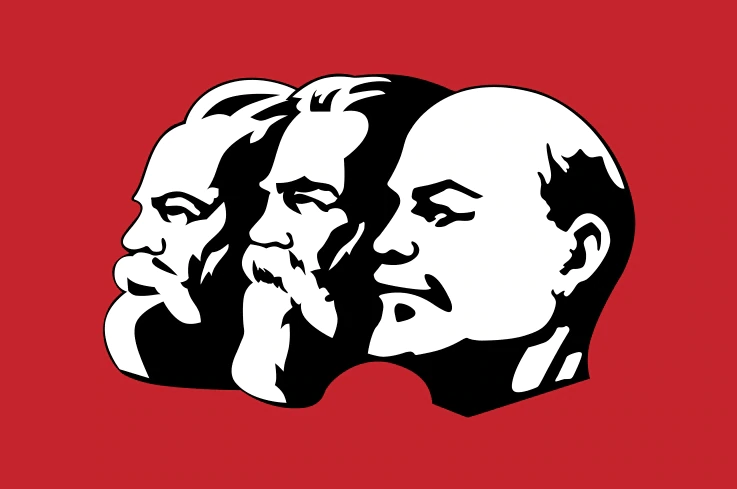More languages
More actions
ProletFlag (talk | contribs) |
ProletFlag (talk | contribs) (→Origin of the term: link) |
||
| Line 7: | Line 7: | ||
== Origin of the term == | == Origin of the term == | ||
In the 1920s, the term Marxism-Leninism was first formulated as well as defined by Joseph Stalin based on his understanding of Orthodox Marxism and Leninism. | In the 1920s, the term Marxism-Leninism was first formulated as well as defined by Joseph Stalin based on his understanding of Orthodox [[Marxism|Marxism]] and Leninism. | ||
[[Vladimir Ulyanov|Lenin]] never used the term "Leninism", nor did he include his ideas in the term "Marxism-Leninism". His ideas developed out of classical [[Marxism|Marxist thought]], which was seen by the [[Communist Party of the Soviet Union|Bolsheviks]] as Lenin's contribution to Marxism. | [[Vladimir Ulyanov|Lenin]] never used the term "Leninism", nor did he include his ideas in the term "Marxism-Leninism". His ideas developed out of classical [[Marxism|Marxist thought]], which was seen by the [[Communist Party of the Soviet Union|Bolsheviks]] as Lenin's contribution to Marxism. | ||
Revision as of 04:13, 10 April 2022

Marxism-Leninism is a scientific world outlook based on dialectical materialism, the materialist conception of history, the Marxist political economy including Leninist conception of imperialism. It is the body of knowledge of the Marxist method applied to the strategy and tactics of revolution since its development by Vladimir Lenin and the Bolsheviks.
Marxism–Leninism was the guiding theory behind national liberation and revolutionary movements in Africa, Asia and Latin America. After the success of the Russian revolution in 1917 and the establishment of the Soviet Union in 1922, many communist parties around the world began to adopt Marxism-Leninism as their political line, and Marxism-Leninism was the main theoretical framework which guided the Korean, Vietnamese, and the Chinese revolutions.
Today, Marxism–Leninism is one of the theoretical foundations of currently in govern communist parties in China, Cuba, Laos and Vietnam, and it is currently the political line of many surviving communist parties today.
Origin of the term
In the 1920s, the term Marxism-Leninism was first formulated as well as defined by Joseph Stalin based on his understanding of Orthodox Marxism and Leninism.
Lenin never used the term "Leninism", nor did he include his ideas in the term "Marxism-Leninism". His ideas developed out of classical Marxist thought, which was seen by the Bolsheviks as Lenin's contribution to Marxism.
"Stalinism"
The term "Stalinism" is often in various contexts an erroneous and pejorative term used by left-anticommunists and rightists. The term within some usage can refer to a time-period or style i.e. "Stalinist architecture," music, or era. It can also refer to Stalin's specific policies and actions in leadership, whereas, Marxism-Leninism primarily refers primarily to his theoretical contributions, and has been interpreted and utilized as a predominant ideology by many different countries varying based upon the material conditions of these countries.
Characteristics
Dialectical and historical materialism
Critique of imperialism
Imperialism as seen and described by Lenin as well as various other Marxists, has been considered to be the highest stage of capitalist society.[1]
